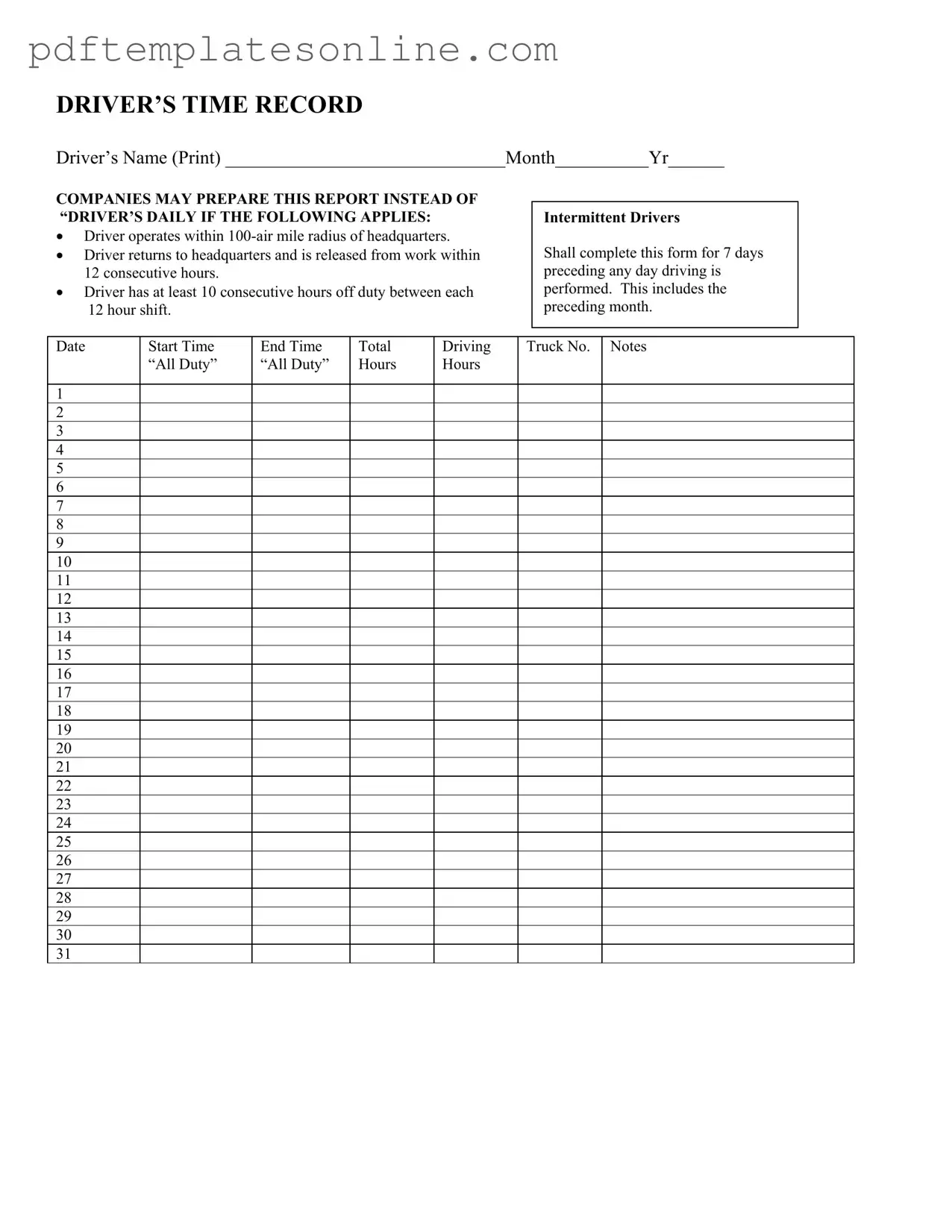Filling out the Driver Time Record form is crucial for compliance and accurate record-keeping. However, many individuals make common mistakes that can lead to complications. Understanding these pitfalls can help ensure that the form is completed correctly.
One frequent error is failing to provide complete information. When drivers neglect to fill in their name, month, or year, it creates confusion. Each section of the form is essential for identifying the driver and the time period being reported. Omitting any of this information can lead to delays in processing or even penalties.
Another mistake is inaccurate time entries. Drivers sometimes miscalculate their start and end times, resulting in incorrect total driving hours. This can affect compliance with regulations and may lead to disputes regarding driving hours. It’s vital to double-check the calculations to ensure they reflect actual driving time.
Additionally, not adhering to the required format can cause issues. The form specifies a clear structure for entering dates and times. If a driver uses an unconventional format or leaves out necessary fields, it may complicate the review process. Consistency is key for clarity.
Some drivers also forget to include notes or remarks when necessary. If there are special circumstances or deviations from the norm, these should be documented. Failing to add relevant notes can lead to misunderstandings about the driving conditions or hours worked.
Moreover, not keeping track of intermittent driving days can be a significant oversight. Drivers are required to complete the form for the seven days preceding any driving day. If this is overlooked, it can result in incomplete records, impacting both compliance and safety.
Finally, neglecting to review the entire form before submission is a common mistake. A quick glance might not catch all errors or omissions. Taking the time to review the completed form can prevent unnecessary complications and ensure that all information is accurate and complete.
